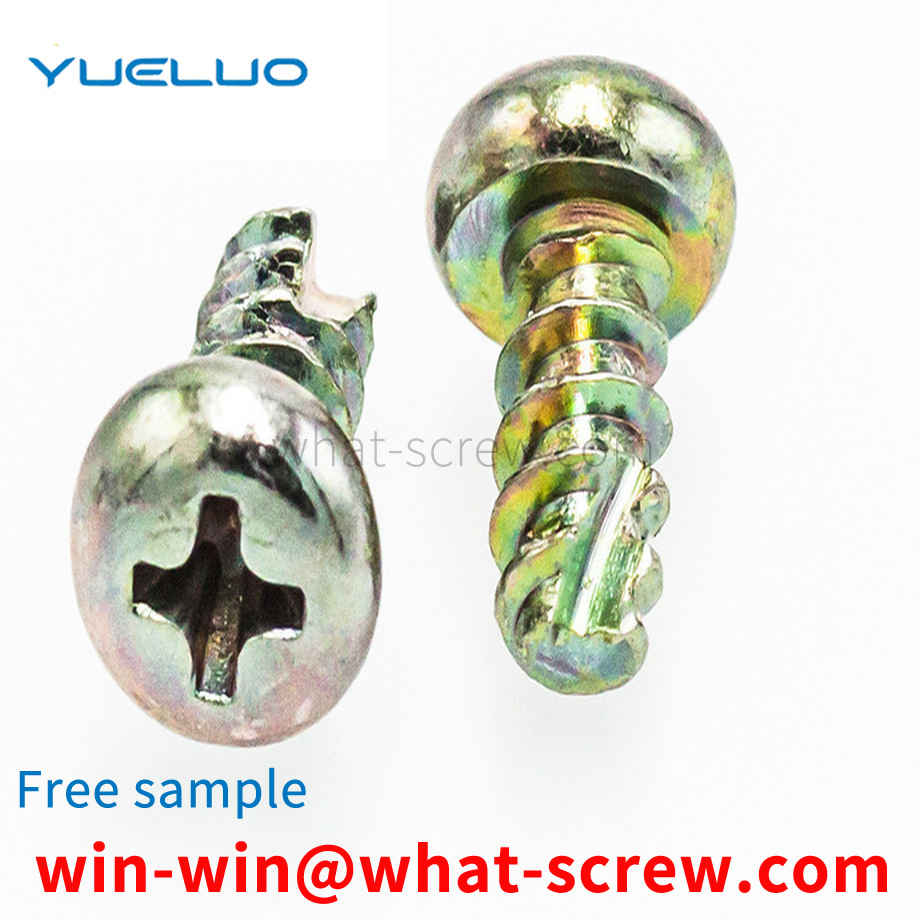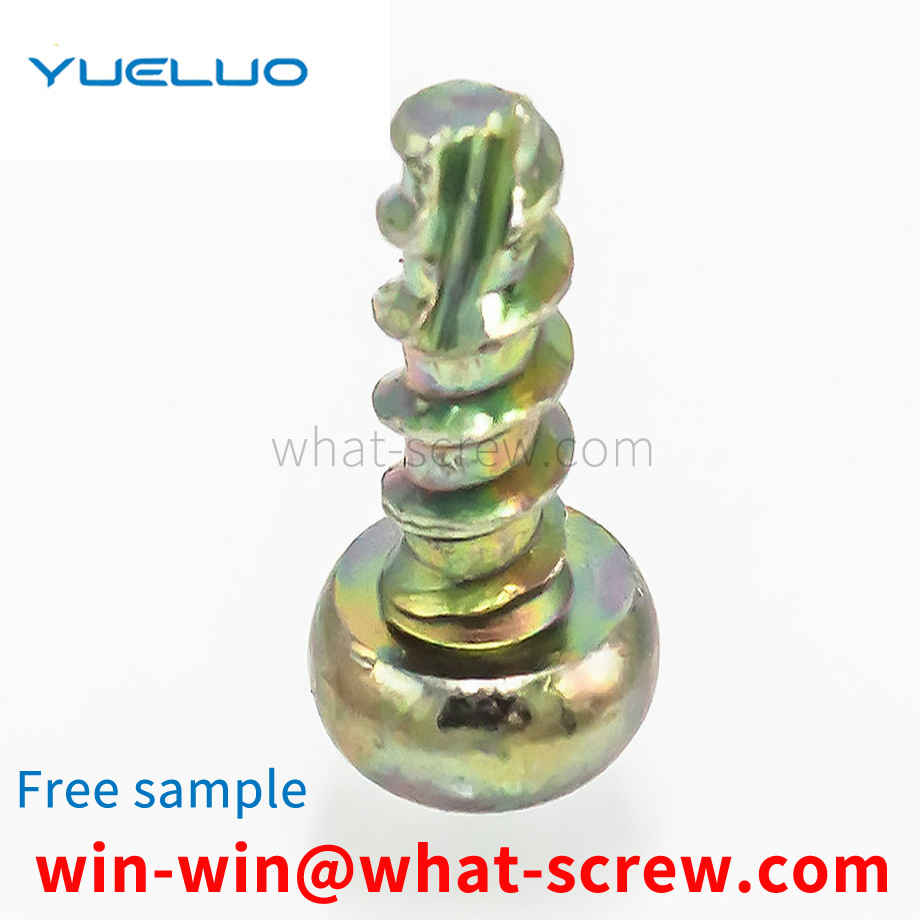Although there are many types of self-tapping locking screws, they all have the following main characteristics: (1) Generally, they are made of carburized steel (accounting for 99% of the total products). Also available in stainless steel or non-ferrous metals. (2) The product must be heat treated. Carbon steel self-tapping screws must be carburized, and stainless steel self-tapping screws must be solution hardened. In order to make the self-tapping screw meet the mechanical properties and performance required by the standard. (3) The product has high surface hardness and good core toughness. That is, inner softness and outer rigidity. This is a major feature of the performance requirements of self-tapping screws. If the surface hardness is low, it cannot be screwed into the matrix; if the toughness of the core is poor, it will break as soon as it is screwed, and it cannot be used. Therefore, inner softness and outer rigidity are the requirements for self-tapping screws to meet the performance requirements. (4) The surface of the product needs surface protection treatment, generally electroplating treatment. Some product surfaces require phosphate treatment (phosphating). Such as: wall panel self-tapping screws are mostly phosphating. (5) It is produced by cold heading process. It is recommended to use high-speed cold heading machine and high-speed thread rolling machine or high-speed planetary thread rolling machine to ensure product quality. The self-tapping screw produced in this way has a well formed head and high thread quality.
In order to prevent the waste of materials, those skilled in the art select steel wire as the processing material, and form an annular ring body by drawing the steel wire. Such as the announcement: CN103522009's invention name is a method of processing a retaining ring. The steel wire is used as the processing material, and the processing is carried out by drawing. After the steel wire is drawn and formed, annealing is performed. After the annealing is completed, the forming needs to bundle the steel wire. Since the cross section of the steel wire is rectangular, when it is drawn into the retaining ring base, the cross section changes due to the extrusion of the material, and the inner ring of the retaining ring base will be higher than the outer ring (forming a slope). The deformation is large. At this time, the punching of the opening of the retaining ring base body will produce a slump or cause greater material deformation; therefore, the retaining ring base body needs to be bundled. The bundling process is to prevent the material from being heated more during the quenching process. At the same time, it also has a certain adjustment effect during the quenching process, which makes the inclined surface smaller; but after the quenching is completed, the hardness of the retaining ring base increases, and the punching process for the upper opening will become more complicated.
Rivets are usually used for riveting the connection between objects, and usually require the use of specific special tools to operate. There are many types of rivets, such as round head rivets, flat cone head rivets, countersunk head rivets, half countersunk head rivets, flat head rivets, hollow rivets, tubular rivets, sign rivets, etc. in order to meet different operational needs.
Specification label broadcast representation format: Thread specification d=M12, nominal length L=80mm, and performance level 4.8 equal-length stud bolts are completely marked as: GB 901 M12×80 [1] Product example: Stud studs are generally required After surface treatment, there are many types of bolt surface treatment, commonly used are electroplating, blackening, oxidation, phosphating, electroless zinc flake coating treatment, etc. However, electroplated fasteners account for a large proportion of the actual use of fasteners. Especially in automobiles, tractors, home appliances, instrumentation, aerospace, communications and other industries and fields are more widely used. However, for threaded fasteners, not only a certain anti-corrosion capability is required in use, but also the interchangeability of threads must be ensured, which can also be called screwability here. In order to meet the dual-use performance of anti-corrosion and interchangeability required by threaded fasteners in use, it is very necessary to formulate special plating standards.
In actual use, the rivet rod body 3-2 is passed through the riveting plate 6 and the riveting plate 7, and the rivet dome head 3-1 is placed in the mold cavity 1-1, and the cover mold 2 is driven by the riveting machine to impact the rivet rod body 3-2. Because the center of the cover mold 2 is provided with a cavity 2-1 that matches the shape of the rivet dome 3-3, the end of the rivet rod 3-2 will form the rivet dome 3-3. However, due to the rivet When the riveting machine is impacted and vibrated, a large amount of oxide slag 4 will be generated, and the oxide slag 4 will slide down the surface of the cavity 1-1 to the bottom of the cavity 1-1 and accumulate. At this time, the temperature of the rivet is very high and the plasticity is very good. The hardness is extremely low and it is easy to form. Therefore, the accumulated oxide slag 4 squeezes the surface of the rivet dome 3-1 and the bottom surface of the cavity 1-1 to form pits, and causes wear on the bottom surface of the cavity, not only It affects the riveting quality, riveting strength and appearance quality of the rivet, and also affects the quality of the rivet die, resulting in economic losses.
We have many years of experience in the production and sales of screws, nuts, flat washers, etc. The main products are: C-class square nuts, Torx countersunk screws and bolts, elastic cylindrical positioning pins, all-metal hexagonal self-locking nuts and other products, we can provide you with suitable products. Your fastener solution.



















 Service Hotline
Service Hotline




